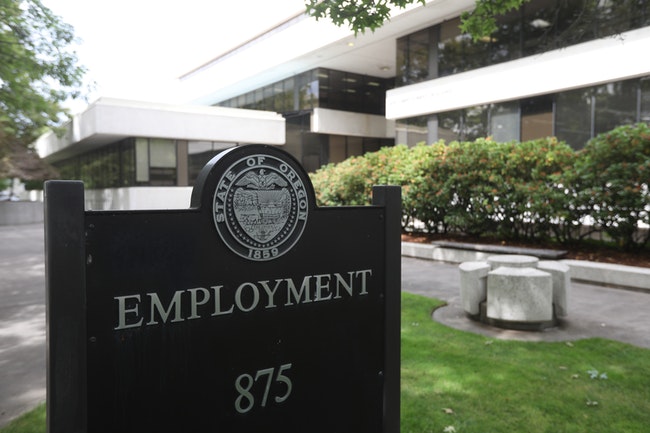 (Amanda Loman/Salem Reporter)
(Amanda Loman/Salem Reporter)
Oregon’s unemployment rate fell again in October, largely thanks to jobs added in leisure and hospitality, business services, construction and manufacturing.
But the state also saw an unusual loss in local government jobs, according to a news release from the Oregon Employment Department, largely driven by trends in school hiring.
The state’s October unemployment rate was 4.4%, down from 4.7% in September.
“In Oregon, nonfarm payroll employment rose by 4,700 in October, following a revised gain of 700 jobs in September. In October, the private sector grew rapidly by adding 10,300 jobs, but that gain was diminished by a loss of 5,600 jobs in government. October’s total nonfarm employment gain was less than the average of 6,800 jobs added per month during the prior six months,” the department said in a news release.
Gail Krumenauer, Oregon’s employment economist, said Oregon saw job losses in local government in both September and October after large gains in the summer.
That’s an unusual pattern, she said, because jobs in both K-12 and higher education are typically “highly seasonal,” with many workers going off payroll in the summer and then ramping up in the fall.
This year, Krumenauer said that didn’t happen for several reasons. Many school districts already laid off workers during the 2020-21 school year who weren’t needed as classes moved online. An expansion of summer programs intended to help kids catch up after a year of online classes also meant fewer education job losses in the summer.
School districts and community colleges also saw declining enrollment, meaning in some cases fewer employees were needed. And Krumenauer said the numbers also reflect the difficulty of filling open local government jobs in education.
“They can’t hire as much as they want to hire, and that’s not unique to education,” she said.
Though Oregon’s vaccination mandate for educators went into effect in October, Krumenauer said she didn’t believe that played a significant role in the numbers. That’s because the department’s data was collected over a period ending Oct. 12, before the Oct. 18 mandate deadline. Also, she said the rest of the U.S., including states without vaccination mandates, are seeing similar trends.
“We’re also at a time when we’re seeing record quits nationwide,” she said. “All of those things together, it creates a painful situation for employers to lose workers.”
-Rachel Alexander









